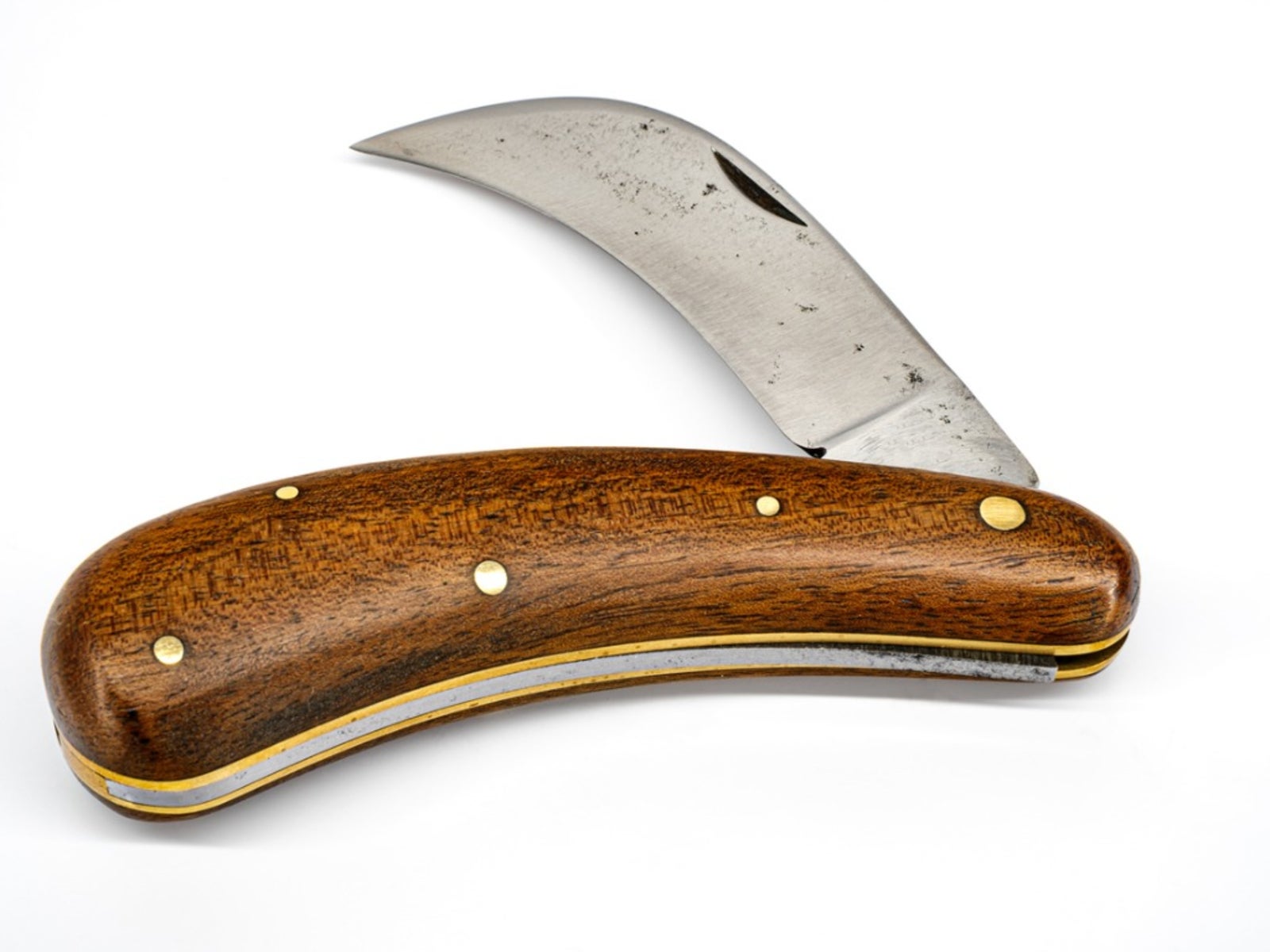What Is A Pruning Knife – How To Use A Pruning Knife In The Garden


A pruning knife is a basic tool in a gardener’s tool chest. While there are various types of pruning knives, all serve to trim plants and do other tasks in the garden. What is a pruning knife exactly, and what are pruning knives used for? Read on for information on the different types of pruning knives and the many pruning knife uses.
What is a Pruning Knife?
If you are new to gardening, you may ask: what is a pruning knife? Pruning knives can be used for many different purposes in the garden. The pruning knife is the “Jack-of-all-trades” of cutlery. Many types of pruning knives are available in commerce, but the most typical pruning knife is short and sharp, with a blade around 3 inches (8 cm.), and a wooden or heavy-duty handle. Some pruning knives are one-piece; others are foldable. Each gardener has a favorite style. The pruning knife blades can be straight or hooked. Exactly what are pruning knives for? It’s easier to list what you can’t do with a pruning knife than what you can. The possibilities are virtually unlimited. Whatever needs doing in the garden, the pruning knife is the tool of first resort. Pruning knife uses run the gamut from trimming vines to harvesting veggies. You can use a pruning knife to slice string, cut flowers, prune vines, and graft trees.
How to Use a Pruning Knife
It’s important to learn how to use a pruning knife before you start a task. In general, it’s important to use a motion that takes the blade away from your body, not toward it. For example, if you are cutting back plant stems or vines, hold the section to be cut away from you. Put tension on the stem or vine to keep it tight, then cut it with a sharp slicing motion away from your body. Another use of a pruning knife is to clean up pieces of bark left hanging after a branch has been cut. Pruning knives are great tools for this type of work. Grasp the knife with the blade parallel to the branch, then slice the hanging pieces off the stem. Use a quick motion away from your body and make the slice in a swipe rather than using a cutting motion.
Sign up for the Gardening Know How newsletter today and receive a free copy of our e-book "How to Grow Delicious Tomatoes".

Teo Spengler is a master gardener and a docent at the San Francisco Botanical Garden, where she hosts public tours. She has studied horticulture and written about nature, trees, plants, and gardening for more than two decades, following a career as an attorney and legal writer. Her extended family includes some 30 houseplants and hundreds of outdoor plants, including 250 trees, which are her main passion. Spengler currently splits her life between San Francisco and the French Basque Country, though she was raised in Alaska, giving her experience of gardening in a range of climates.